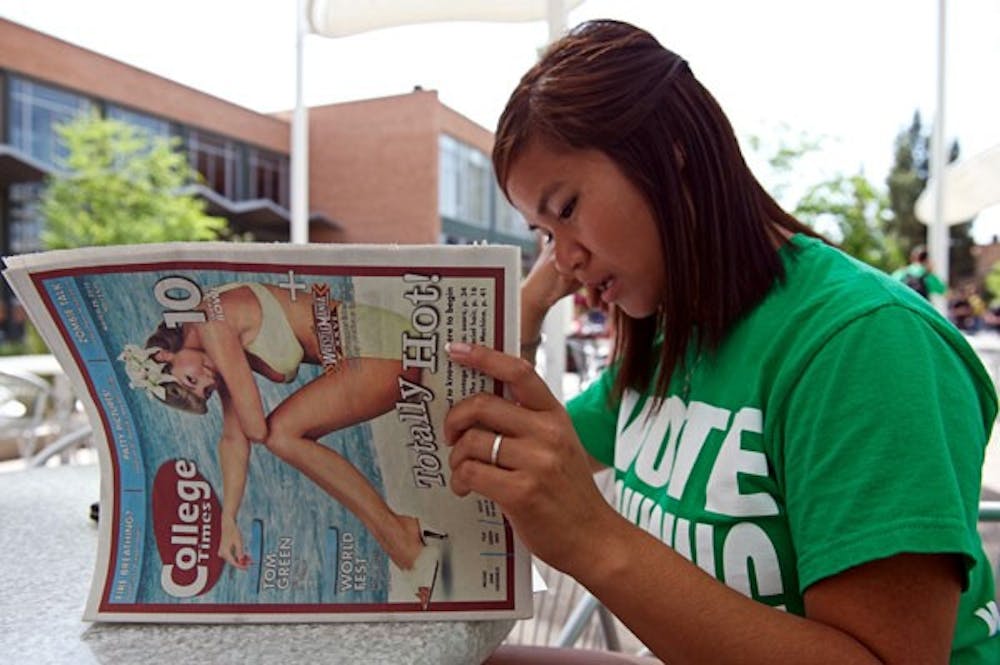A new study co-authored by an ASU professor challenges the common beliefs that advertisements featuring thin models cause low self-esteem for women, and advertisements with heavier models should be encouraged to increase positive body image.
Ads from the Dove Campaign for Real Beauty exemplify these beliefs, by depicting more average body types.
Naomi Mandel, a marketing associate professor, and two professors from other universities, found in the study that female undergraduate students with heavy body types had lower self-esteem after looking at ads with models of all body types.
This low self-esteem could cause consumers to buy less of a product, unless consumers believe the product could be effective in boosting self-esteem, the study stated.
The most effective ads for consumers with heavy body types are those with objects and not models.
“When the [thin and heavy] women were not looking at ads with models … they had similar levels of self esteem,” Mandel said.
The students who participated in the study were from the Netherlands, but a previous paper on women’s body issues surveyed ASU students.
The body types of consumers were categorized by low, normal and high body mass index, or BMI, measurements. The models were organized by moderately thin, extremely thin or heavy body types.
The study also found that women with normal body types related more to moderate body types versus extreme body types, and their
self-esteem was affected accordingly.
Women with normal BMI had lower self-esteem after viewing moderately heavy models in ads.
This demonstrates that the female consumer’s reaction to different body types in ads depends on her own body type, Mandel said.
“The self-esteem of normal weight women is more malleable because they see themselves as similar to a lot of different body types,” she said. “When they see that moderately thin body type, they think, ‘Well, that could be me.’”
Heavy women are also affected by this when they see plus-size models.
“People who look thinner are still evaluated more positively than people who look heavier,” said Dirk Smeesters, one of the study authors and a marketing associate professor at Erasmus University in the Netherlands.
“If being heavy would be the ideal body type in our world, our results would look different,” Smeesters said in an e-mail.
The results also revealed that ads with extremely thin models lowered self-esteem in consumers with normal and heavy body types, but not consumers with thin body types.
More research on how this affects the behavior of consumers is in progress, though in this study, cookie consumption and dieting and exercise intentions were measured after exposure to ads with models.
All body types were affected in some way after exposure to ads. For example, even low-BMI women “ate less and wanted to diet and exercise more” after they saw an ad with a heavy model.
“My feeling has always been that to sell certain types of products … you kind of have to make the woman feel bad about herself,” Mandel said.
Katherine Loveland, a marketing doctoral student, is continuing research with Mandel focused on consumer behavior, like compliance with a message in an ad with models of varying body types.
“We found that the better people feel about their bodies, the better food choices they make,” she said.
When consumers were more self-aware, by looking at themselves in mirrors while also looking at the ad, they made better food choices, she said.
“When they were in front of the mirror, it was sort of a reality check,” Loveland said, adding that her research is ongoing and she didn’t work on this particular study.
Loveland said she has found that women tend to compare themselves constantly.
“Even when we know these [ad] images aren’t realistic, we can’t help ourselves,” she said. “We just do this constant, automatic comparison.”
Loveland said people might be upset by the results of Mandel’s study, since people typically like the idea that using heavy models are better for people’s self-esteem and promote positive body image.
“I think if anything it will at least make advertisers think more carefully about why they’re choosing models the size that they do,” she said. “I’m hoping it’ll push them away from using the super-skinny models at least.”
Reach the reporter at reweaver@asu.edu




